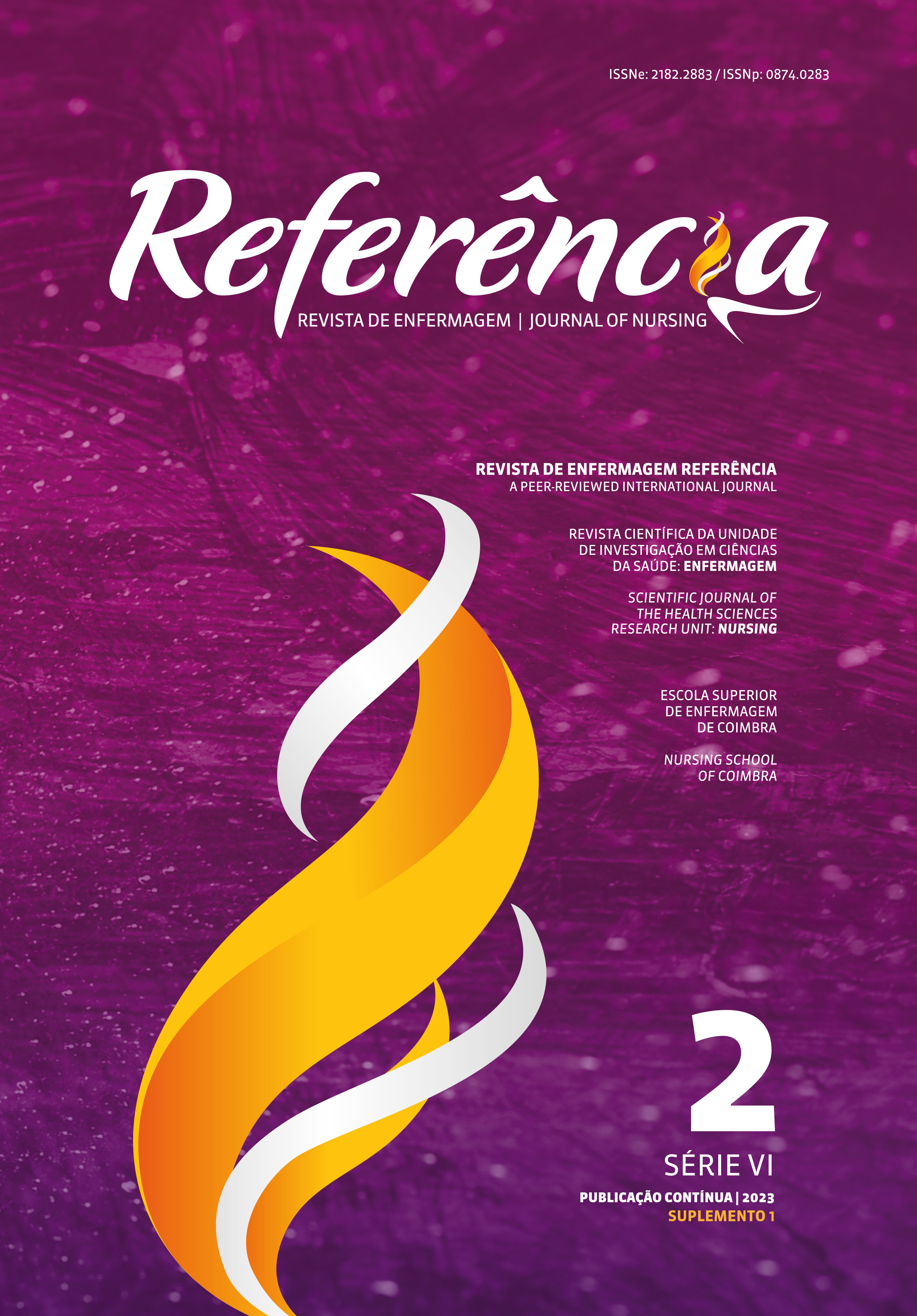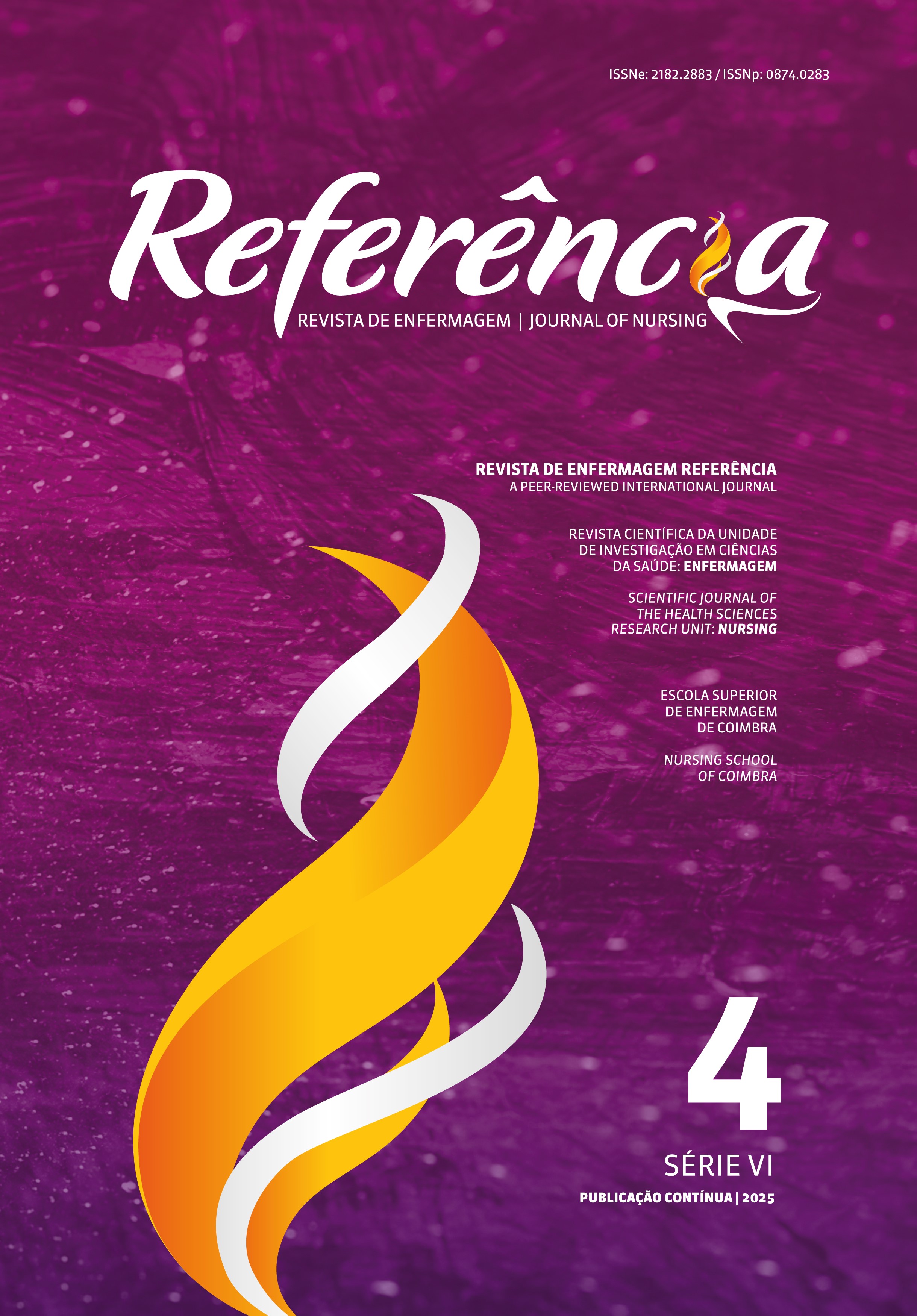Family caregivers of people with dementia: Translation, adaptation, and validation of the Boundary Ambiguity Scale
DOI:
https://doi.org/10.12707/RVI22035Keywords:
bereavement, older adult, dementia, family caregiverAbstract
Background: Caring for people with dementia generates stress among family caregivers. One of these stressor events is ambiguous loss.
Objectives: To translate, adapt, and validate the Boundary Ambiguity Scale (BAS) into European Portuguese and assess its psychometric properties.
Methodology: Methodological study with a sample of 88 family caregivers of people with dementia. Internal consistency was assessed using McDonald’s omega coefficient (ω). Construct validity was assessed through exploratory factor analysis (EFA) and criterion validity through the Perceived Stress Scale (PSS).
Results: The BAS showed excellent content validity. The EFA revealed a two-factor model, explaining 44% of variance, and a ω of 0.72. Family caregivers who live with people with dementia had greater ambiguous loss (t = 2.823, p < 0.01). A statistically significant moderate positive correlation was found between the BAS and the PSS (rs = 0.578, p < 0.01).
Conclusion: The BAS has acceptable validity and internal consistency for assessing ambiguous loss.
Downloads
References
Alzheimer Europe. (2019). Dementia in Europe Yearbook 2019: Estimating the prevalence of dementia in Europe. https://www.alzheimer-europe.org/Publications/Dementia-in-Europe-Yearbooks
Boateng, G. O., Neilands, T. B., Frongillo, E. A., Melgar-Quiñonez, H. R., & Young, S. L. (2018). Best practices for developing and validating scales for health, social, and behavioral research: A primer. Frontiers in Public Health, 6. https://doi.org/10.3389/fpubh.2018.00149
Boss, P. (2007). Ambiguous loss theory: Challenges for scholars and practitioners. Family Relations, 56(2), 105–111. https://doi.org/10.1111/j.1741-3729.2007.00444.x
Boss, P. (2016). The context and process of theory development: The story of ambiguous loss. Journal of Family Theory & Review, 8(3), 269–286. https://doi.org/10.1111/jftr.12152
Boss, P., Bryant, C. M., & Mancini, J. A. (2017). Ambiguous Loss: A Major Stressor. In P. Boss, C. M. Brayand & J. A. Mancini (Eds.), Family stress management: A contextual approach (3ª ed., pp. 71-85). SAGE.
Boss, P., Greenberg, J. R., & Pearce-McCall, D. (1990). Measurement of boundary ambiguity in families. University of Minnesota.
Cohen, S., Kamarck, T., & Mermelstein, R. (1983). A global measure of perceived stress. Journal of Health and Social Behavior, 24(4),385. https://doi.org/10.2307/2136404
Davidson, M. (2014). Known-groups validity. In A. C. Michalos (Ed.), Encyclopedia of quality of life and well-being research (pp.3481–3482). Springer Netherlands. https://doi.org/10.1007/978-94-007-0753-5_1581
Hair, J. F., Black, W. C., Babin, B. J., & Anderson, R. E. (2019). Multivariate data analysis (8th ed.). Cengage. Katz, M. H. (2011). Multivariable analysis (3rd ed.). Cambridge University Press. https://doi.org/10.1017/CBO9780511974175
Malhotra, N. K. (2019). Pesquisa de marketing: Uma orientação aplicada (7th ed.). Bookman
Organization for Economic Co-operation and Development. (2019). Health at a glance 2019 OECD indicators. https://doi.org/10.1787/e88a7402-en
Pais Ribeiro, J., & Marques, T. (2009). A avaliação do stresse: A propósito de um estudo de adaptação da escala de percepção de stresse. Psicologia, Saúde & Doenças, 10(2), 237–248. https://www.redalyc.org/pdf/362/36218589008.pdf
Smodic, S., Forst, E., Rauschenberger, J., & McCoy, M. (2019). Financial planning with ambiguous loss from Alzheimer’s disease: Implications, applications, and interventions. Journal of Financial Planning, 32(8), 34–45. https://www.financialplanningassociationorg/sites/default/files/2021-10/AUG19%20JFP%20Smodie%20PDF.pdf
Thomas, P., Clement, J., Hazif-Thomas, C., & Leger, J. (2001). Family, Alzheimer’s disease and negative symptoms. International Journal of Geriatric Psychiatry, 16(2), 192–202. https://doi.org/10.1002/1099-1166(200102)16:2<192::aidgps301>3.0.co;2-y
Viladrich, C., Angulo-Brunet, A., & Doval, E. (2017). Un viaje al rededor de alfa y omega para estimar la fiabilidad de consistencia interna. Anales de Psicología, 33(3), 755. https://doi.org/10.6018/ analesps.33.3.268401
van Wijngaarden, E., Wedden, H., Henning, Z., Komen, R., & The, A.-M. (2018). Entangled in uncertainty: The experience of living with dementia from the perspective of family caregivers. PLOS ONE, 13(6), e0198034. https://doi.org/10.1371/journal.pone.0198034
Wild, D., Alyson, G., Mona, M., Sonya, E., Sandra, M., Verjee-Lorenz, A., Erikson, P., Grove, A., Martin, M., Eremenco, S., McElroy, S., Verjee-Lorenz, A., & Erikson, P. (2005). Principles of good practice for the translation and cultural adaptation process for patient-reported outcomes (PRO) measures: Report of the ISPOR task force for translation and cultural adaptation. Value Health, 8(2), 94–104. https://doi.org/10.1111/j.1524-4733.2005.04054.x
World Health Organization. (2021). Dementia. https://www.who.int/news-room/fact-sheets/detail/dementia
Yusoff, M. S. (2019). ABC of content validation and content validity index calculation. Education in Medicine Journal, 11(2), 49–54. https://doi.org/10.21315/eimj2019.11.2.6






















